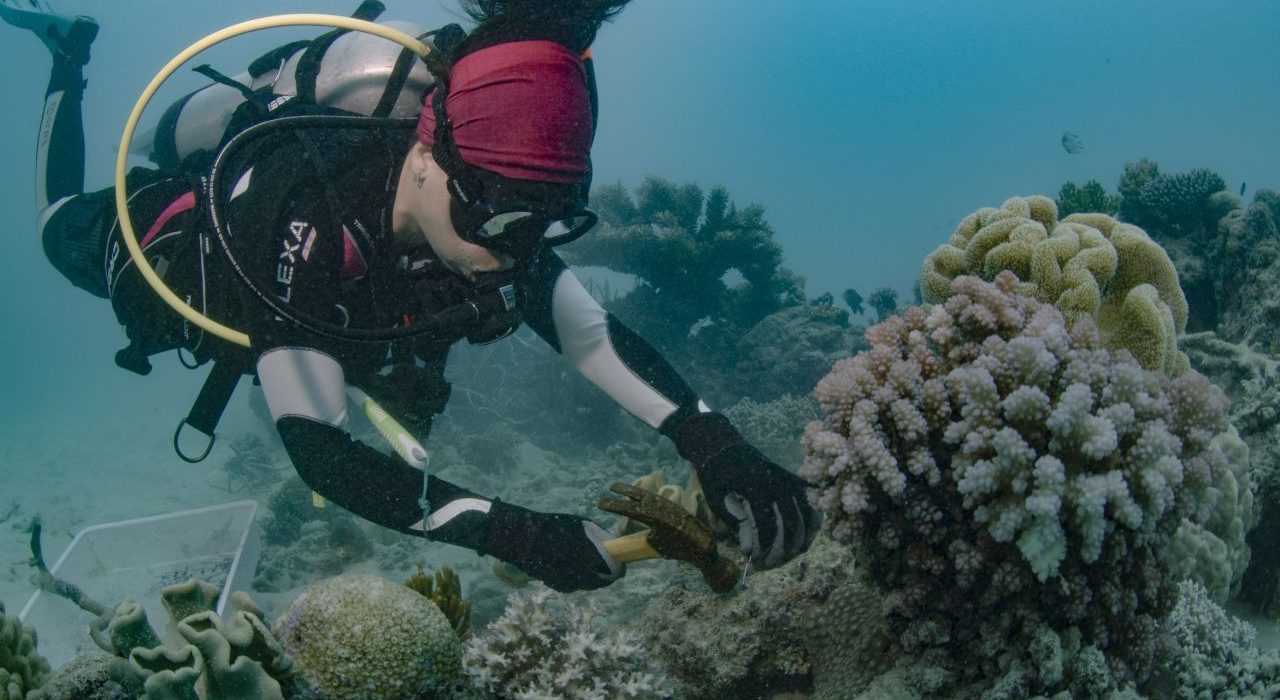Coral reefs, often dubbed the “rainforests of the sea,” are rich and complex ecosystems bustling with life and vibrant sounds. Beneath the waves, a cacophony of underwater noises—ranging from the melodious calls of fish to the rhythmic crackling of snapping shrimp—fills the marine environment. These sounds aren’t merely background noise; they serve as a vital component in the intricate tapestry of coral reef ecology.
Recent research conducted by the Woods Hole Oceanographic Institution (WHOI) sheds light on the pivotal role of these underwater symphonies. The study underscores how these sounds act as beacons, guiding coral larvae towards suitable habitats for settlement and growth. This revelation not only deepens our understanding of coral reef dynamics but also presents a groundbreaking opportunity for Coral Reefs for Conservation.
By harnessing the power of soundscapes from healthy reefs, researchers aim to revitalize damaged ecosystems and bolster the resilience of these invaluable marine habitats.
Understanding Coral Larval Settlement
Before corals can establish themselves on a reef, they begin as larvae, drifting in the ocean currents. Settlement, the process by which larvae attach to a suitable substrate and transform into polyps, is a critical phase in coral reef formation. Research indicates that larval settlement is influenced by various environmental cues, including light, water quality, and, notably, sound. The underwater soundscape of a healthy reef serves as a beacon for larvae, guiding them towards suitable habitat for growth and development.
The Impact of Reef Degradation on Soundscapes
Coral reefs worldwide are under siege from a myriad of threats, including coral bleaching, pollution, and overfishing, which collectively contribute to reef degradation. These stressors not only impact coral health but also have profound consequences for the underwater soundscape. Degraded reefs undergo a dramatic alteration in their acoustic environment, characterized by diminished biological activity and quieter sound profiles when compared to their healthy counterparts.
The consequences of this altered soundscape extend beyond mere auditory changes. It disrupts the natural cues crucial for coral larvae, impeding their ability to settle and establish themselves on the reef. Without these acoustic cues, larvae may struggle to navigate and locate suitable habitats for colonization. As a result, the recovery and resilience of coral populations are compromised, further exacerbating the challenges faced by degraded reefs. Recognizing the intricate interplay between reef degradation and acoustic disruption is essential for devising effective conservation strategies aimed at mitigating the impacts of human-induced stressors on coral reef ecosystems.
The Potential of Sound-Based Restoration
In response to the daunting challenges facing coral reefs, scientists at WHOI embarked on a pioneering investigation into the potential of sound-based restoration methods. Their groundbreaking study, published in the esteemed journal Royal Society Open Science, unveils promising findings that could revolutionize coral reef conservation efforts.
By simulating the soundscape of healthy reefs through carefully crafted recordings, researchers sought to assess whether artificially reintroducing these sounds could counteract the impacts of reef degradation. Remarkably, their experiments yielded encouraging results: broadcasting these recordings onto degraded reefs led to a substantial increase in coral larval settlement rates. This innovative approach not only demonstrates the feasibility of using sound as a tool for Coral Reefs for Conservation but also underscores its potential to enhance the resilience of imperiled ecosystems.
As coral reefs continue to face unprecedented threats, this research offers a glimmer of hope for their preservation. Sound-based restoration presents a novel and promising avenue for bolstering the recovery of degraded reefs, providing conservationists with a powerful tool to combat the ongoing decline of these invaluable marine ecosystems.
Practical Applications and Future Directions
The research on sound-based reef restoration opens doors for practical applications in coral reef management and conservation. Conservationists can strategically deploy sound-based interventions, such as underwater speakers broadcasting healthy reef sounds, to bolster the recovery of degraded reefs. However, further research is imperative to optimize these techniques. This includes assessing the long-term effects on coral recruitment, exploring potential drawbacks or unintended consequences, and refining deployment strategies for scalability and effectiveness. Additionally, interdisciplinary collaboration between scientists, engineers, and conservationists is essential to develop innovative approaches that harness the power of sound while minimizing ecological risks. As we navigate the complexities of reef restoration, continued scientific inquiry and adaptive management strategies will be crucial to ensure the success and sustainability of sound-based interventions in coral reef conservation efforts.
Conclusion: Sound as a Vital Tool for Reef Restoration
The study conducted by WHOI underscores the importance of sound in coral reef ecology and offers a novel approach to Coral Reefs for Conservation. By harnessing the power of sound to attract coral larvae, conservationists may enhance the resilience of degraded reefs and promote their recovery in the face of mounting threats. As we strive to safeguard these invaluable ecosystems for future generations, sound-based interventions represent a promising avenue for innovation and collaboration in Coral Reefs for Conservation efforts worldwide.

